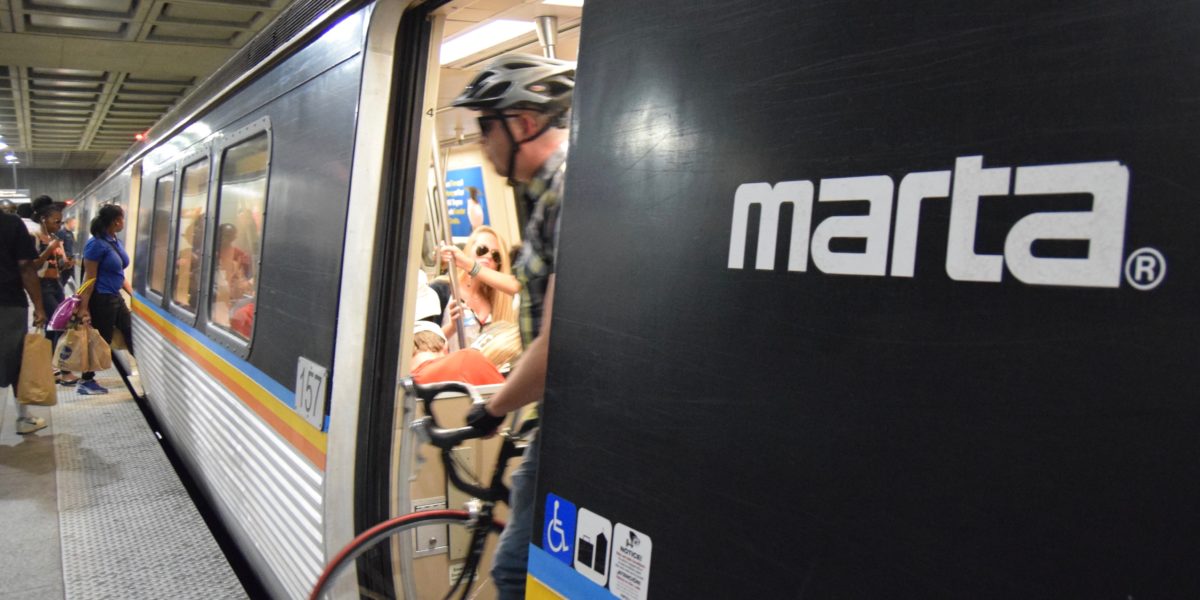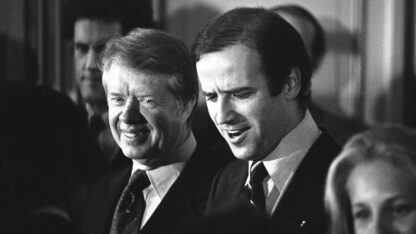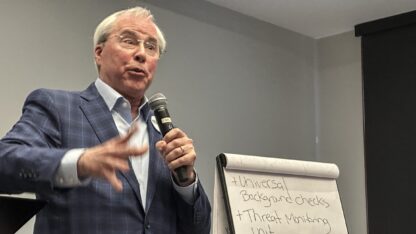MARTA’s Post-I-85-Bridge-Collapse Growth Slows Down

Alison Guillory / WABE
The day after a section of an Interstate 85 bridge in Atlanta collapsed, the Metropolitan Atlanta Rapid Transit Authority saw a 21 percent increase in ridership. Nearly a month later, the growth in new riders is slowing down.
Since the collapse, MARTA has experienced an average increase of 11 percent more riders on its trains.
MARTA spokesman Erik Burton said it led to parking challenges, with parking lots quickly filling up in the mornings and situations where both main parking lots and overflow lots are full.
“The initial challenges that we had was around the parking situation,” Burton said. “Primarily speaking I would say that our lots still have availability, more so than they ever have before because we’ve added 2,400 spaces.”
After the bridge collapse, MARTA train stations with park and ride lots saw large ridership gains. Early numbers show Brookhaven has seen a 64 percent increase in ridership and Sandy Springs had the second largest increase at 43 percent since March 30. Burton said he wants to convert the new riders to regular riders.
“We want 100 percent of those riders to stick with MARTA,” Burton said. “The bridge is quickly being repaired. Some people will return to their normal habits, but we hope in the process to retain as many of those riders as possible.”
MARTA currently has 25,000 parking spots at its 38 rail stations. Companies like AT&T have partnered with MARTA on short-term lease agreements to help it open the additional 2,400 parking spots and overflow lots since the bridge collapse.
Lessons from Minneapolis
After an interstate in Minnesota collapsed on August 1, 2007, Michael Iacono, a senior research analyst at the Minnesota Department of Transportation, said commuters in Minneapolis responded in a similar fashion, with an increase in public transit ridership.
“We think the bridge collapse led some people to temporarily switch modes to public transit, especially for the ones that worked in downtown,” Iacono said. “There was this offsetting effect as Metro Transit decided to ramp up service in response. They started providing additional frequency on existing routes, and providing additional temporary park and ride capacity on some outlying locations.”
Iacano worked with his colleagues at the University of Minnesota at the time to study the impact of the collapse using two years’ worth of data from Metro Transit, the largest public transit agency in the area. Four months after the bridge collapse, the agency saw a 6.6 percent increase in monthly ridership system-wide.
However, the long term trend, he said, “has been fairly stable,” with an overall increase of one to two percent per year, barring a recent decline.
Hennepin County Board Commissioner Peter McLaughlin said he knew children on the school bus on the Interstate 35-West that crossed the Mississippi river.
“There were conversations about transit and it seemed this might be the impetus to have a major transportation bill,” McLaughlin said. “But that immediate energy around that effort dissipated relatively quickly.”
McLaughlin said the conversation quickly turned to money.
“For about a week there was this push to do something about this,” McLaughlin said. “So there was a push, but almost like Katrina, it changed then among the Republicans to ‘Yeah we’ll do it, but there’s got to be a dollar for dollar offset in other spending.’”
The next year, however, a transportation bill did pass, with significant funds allocated to repairing structurally deficient bridges.
9(MDAxODM0MDY4MDEyMTY4NDA3MzI3YjkzMw004))








